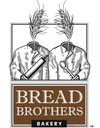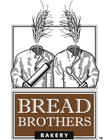Why You Shouldn't Overlook Sourdough
When you hear “sourdough”, what comes to mind? Perhaps San Francisco, or the image of a of rustic loaf. We've all heard of sourdough, but in our modern world, it's generally a misunderstood and under-appreciated form of bread craftsmanship. Offering a distinct texture and flavor, and a myriad of health benefits, sourdough is worth another look.
A Bit of Context
Let's first take a quick look at how the average, non-sourdough loaf is made. A simple loaf of bread is typically composed of 6 basic ingredients - flour, water, salt, fat (such as butter or olive oil), yeast, and sugar. These ingredients are mixed together to form the dough, and each one plays a particular role. The flour and water form the bulk of the dough. The salt adds flavor. The fat adds flavor, moisture, and helps create a softer texture in the final product. The yeast causes the bread to rise. The sugar feeds the yeast - more on that next. (A quick note on fat in bread dough: the soft texture mentioned above is akin to sandwich bread, or a burger bun. For breads where a soft texture is not necessarily the main focus, such as a baguette or an artisan round, the fat content may be reduced or eliminated altogether.)
After its initial formation, the dough is then left to rise in a fermentation process in which the yeast microbes feed off the sugars in the bread dough. As the yeast microbes consume the sugar, they release carbon dioxide, and it is this release of gas that makes the dough rise. The process of kneading the dough evenly distributes the gas and creates a consistent texture throughout the whole dough. The amount of rising and kneading plays a large role in the texture of the finished bread. When the baker decides the rising and kneading is just right, they place the dough into the oven, where it bakes into a loaf of bread!
What Makes Sourdough, Sourdough
So what makes sourdough different? Let's start with the basics again. A typical sourdough is made from only 4 ingredients - flour, water, salt, and sourdough starter (which is prepared using just flour and water, so we could even knock that list down to 3). The sourdough starter is a little colony of naturally occurring yeast and healthy bacteria that is used in sourdough production. It's also the key to this whole thing, so it's important that we take a minute to understand what it is, how it's used, and how it's different from the yeast we mentioned earlier.
Flour naturally contains yeast. It's not enough to leaven bread (make it rise), which is why bread usually has yeast added to it. Using the natural yeast to leaven your bread is possible but requires some preparation, in the form of making a sourdough starter. It begins with a mixture of flour and water. Remember that fermentation process where the yeast consumes the sugar? Here, the natural yeast in the flour feeds off the natural carbohydrates in the flour. As the yeast consumes the flour, you must add more flour to the mix, known as “feeding” your starter. The natural yeast will continue to multiply and flourish as you continue to feed the starter more flour and water. The environment in the starter also fosters the growth of lactic acid bacteria - beneficial bacteria that aid in digestion, and are able to fight off bad bacteria from developing in the starter.
Okay, so you have this yeast colony, now what? Well, remember that the goal is to use this natural yeast to leaven your bread. When the starter contains enough yeast to be useful, you'll use a little scoop of it in your dough. Remember the 4 core ingredients of sourdough - flour and water to form the dough, salt for flavor, and a bit of your yeast-rich sourdough starter to make it rise. At this point, the preparation of the dough is pretty straightforward: rising, kneading, baking, bread!
So you know about the sourdough starter and how it's used in bread, but what are the differences between it and the other kind of yeast? The first is in the production. Sourdough starter is the result of a slow fermentation process that cultures the lactic acid bacteria and yeast from the flour itself. Commercial yeast production is a highly scientific manufacturing process that involves isolating cells from a strain of yeast and feeding them with various sugars for rapid production. The slow fermentation method yields a number of health benefits which we will discuss in just a bit.
The second major difference is convenience. Commercial baking yeast comes from the store and is usually found in jars or packets. It has essentially been cultured, collected, and pre-packaged ready for you to use - no feeding necessary. On the other hand, preparing a starter and getting it ready to use can take 1-2 weeks! However, it is worth noting that most of the hard work with sourdough is in the upfront preparation. Once the starter is ready, it can easily be maintained for use at a moment's notice.
Health Benefits
Okay, time to talk about health benefits! First, we want to make it clear that Bread Brothers is not offering medical advice. Specific health questions or concerns should always be addressed by health professionals. We just want to share some of the health benefits that have been reported by various studies, and help raise awareness about what this bread might do for you! So, in no particular order, here we go:
Sourdough can act as a prebiotic. Prebiotics are natural compounds in food that aid the growth of beneficial microorganisms in the body. In other words, the fiber found in sourdough feeds the good bacteria that live in your intestines and help digest your food. For this reason, sourdough bread is much more easily digested for some people than other forms of bread.
A sourdough loaf will sit and rise for a longer period before baking than a dough with added yeast. This slow fermentation process used in preparing sourdough breaks down a significant amount of the wheat's gluten content. The lower natural gluten content inherent to sourdough means that some people with gluten sensitivities may be able to eat sourdough without any issues. However, sourdough is not completely gluten-free unless specifically prepared as such, the same as with other breads.
The bacteria that form the sourdough change the shape of the molecules in the bread, which causes your body to absorb the bread starches more slowly. Slower absorption results in more stable blood sugar levels, and lower insulin spikes. These effects are beneficial to anyone, but may make sourdough an especially healthy choice for anyone closely monitoring their blood sugar due to diabetes or other health reasons.
Sourdough is a good source of calcium, folate, iron, zinc, potassium, magnesium, and niacin. The lactic acid bacteria in sourdough can also be linked to the bread's high levels of beneficial antioxidants.
If you thought we were done discussing the wonders of lactic acid bacteria, think again! Lactic acid bacteria also drastically improve your body's ability to absorb nutrients. The effect is so great that in some cases, your body can actually receive more nutrients from sourdough than from other foods with a higher vitamin and mineral content, but no lactic acid content.
The slow fermentation that occurs while sourdough rises also increases the level of resistant starch in the bread. Resistant starches are a type of non-digestible starch that have a variety of health benefits. Undigested in the small intestine, these starches reach the large intestine where they ferment and feed the healthy bacteria in our gut. Maintaining a healthy gut leads to a decrease in gas and constipation, and can also help lower cholesterol. Resistant starches also play an important role in good colon health, including reducing colon inflammation. They also contain fewer calories than regular starches, and therefore can be a better option when designing a dietary plan to maintain or lose weight.
We also want to note that some commercially produced sourdough breads are not true sourdoughs, but simply sourdough flavored. These breads contain various additives in the dough to mimic the flavor of sourdough, but they do not offer the health benefits of a real sourdough. Remember, a real sourdough is always leavened by the natural yeast found in the sourdough starter.
A Few More Things
Before we wrap things up, we want to quickly share a few more benefits and other interesting things about sourdough. The first is that sourdough is often speculated as the earliest form of leavened bread, with evidence of its existence stretching back at least 5,700 years! Before pre-prepared yeast was sold in stores, naturally occurring yeast was the only option.
Some other benefits include the fact that it can be made with fewer ingredients. So if all you have is flour, water, and salt, a little bit of time and effort can still get you a good loaf. There's also the satisfying feeling that comes from doing something the old fashioned way, and sourdough can offer the same appeal that comes from blown glass, hand-spun pottery, or an album of photographs that were actually developed from a film roll.
Last but not least, there's the distinct texture and taste of sourdough. Sourdough has a slightly chewy texture as opposed to many breads which can be drier and/or more crumbly. Most sourdough breads also have a crispy outer crust that many people find appealing. As for sourdough's eponymous taste, the level of sour tanginess can actually be controlled through the preparation of the starter, how much starter is used in the dough, how long and at what temperature the dough rises, and more. Sourdough may come from just a few ingredients, but every baker will use these ingredients a little differently to dial in their own unique artisan taste.
So there you have it! Our hope is that you come away from this article a bit more educated about the what and why of this ancient form of bread. While ultimately all food choices come down to some form of personal preference, we invite you to at least give sourdough a chance. With so many varieties available, there's bound to be one you love. Not sure where to start? Bread Brothers makes delicious, all-natural sourdough from our own starter in both white and 100% whole wheat varieties! Feeling a bit more ambitious? We also sell sourdough starters for those ready to jump right into baking their own. Find them all here, and enjoy your sourdough journey!





Leave a comment